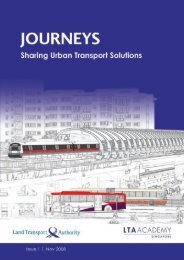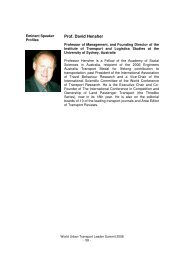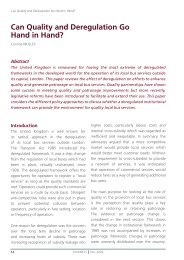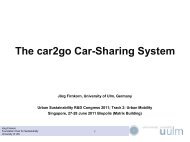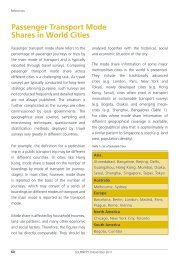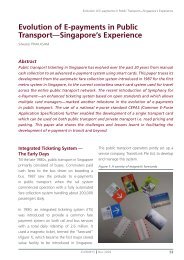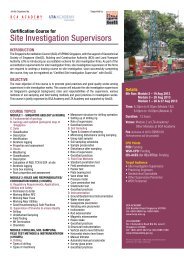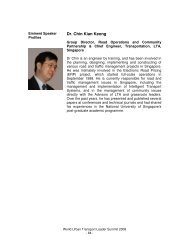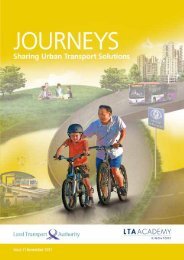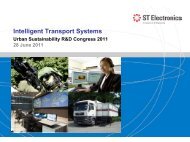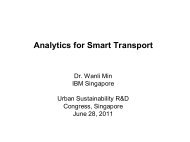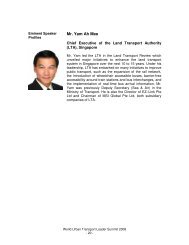Issue 4 May 2010 - LTA Academy
Issue 4 May 2010 - LTA Academy
Issue 4 May 2010 - LTA Academy
You also want an ePaper? Increase the reach of your titles
YUMPU automatically turns print PDFs into web optimized ePapers that Google loves.
Urban Transportation Planning for a Vibrant and Distinctive Singapore<br />
Urban Transportation Planning for a<br />
Vibrant and Distinctive Singapore<br />
Michael QUAH and Dickson YEO<br />
Abstract<br />
Singapore’s Economic Strategies Committee in early <strong>2010</strong> issued a series of<br />
recommendations towards making Singapore a “vibrant and distinctive global city...<br />
open and diverse, the best place to grow and reach out to a rising Asia, and a home<br />
that provides an outstanding quality of life for our people.” This paper explores the<br />
role of urban transportation planning as one of many factors that could contribute to<br />
this vision.<br />
Singapore’s well-articulated plans to test-bed electric vehicles dovetail well with its<br />
vision for a “smart energy economy” – an example to Asia. We will focus primarily on<br />
the pros and cons of vehicle electrification; issues more complex than is often simplified<br />
by purveyors of new technologies.<br />
Introduction<br />
Singapore, with its Rapid Transit Systems<br />
(RTS), buses, taxis, its control of private<br />
vehicle ownership and usage through the<br />
Electronic Road Pricing (ERP) scheme, vehicle<br />
tax schemes and the annual quota for growth<br />
of the private vehicle fleet, is to be lauded<br />
for striking an appropriate balance between<br />
economic efficiency, satisfying demand<br />
for better transportation and managing<br />
traffic congestion.<br />
In fact, the ERP systems in place in Singapore,<br />
the signboards of the parking guidance system,<br />
the speed-trap cameras, the proliferation of<br />
GPSs, in totality, all provide the foundation for<br />
an Intelligent Transport System (ITS), which<br />
could in the future:<br />
42<br />
JOURNEYS <strong>May</strong> <strong>2010</strong><br />
• Reduce accidents, by enabling vehicle-tovehicle<br />
(V2V) communications<br />
• Allow for individual vehicles to communicate<br />
seamlessly with traffic signals, i.e., vehicleto-infrastructure<br />
(V2I) communications,<br />
enabling smoother traffic flows [these<br />
may be based on Dedicated Short Range<br />
Communications (DSRC) technologies]<br />
• Provide real-time relevant traffic and<br />
weather data to all vehicles (also V2I), and<br />
• Enable data capture for traffic management,<br />
over time, to assess and improve upon<br />
multi-modal transportation performance.<br />
Beyond the safety aspects, such systems provide<br />
environmental benefits in reducing tail-pipe<br />
emissions from idling vehicles and thus improve<br />
overall energy efficiency and fuel savings.



